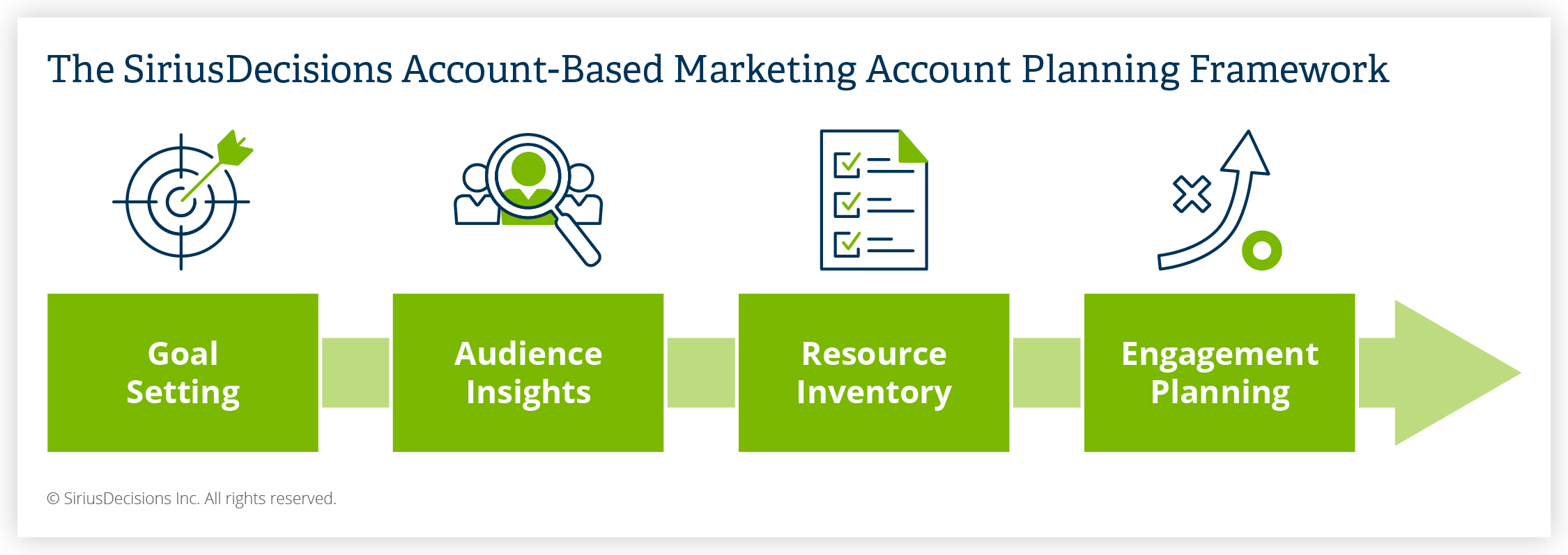The Four-Step Strategic Account Planning Process – Which Step Most Organizations Get Wrong
- Effective strategic account planning incorporates four steps: goal setting, audience insights, resource inventory and engagement planning
- Organizations commonly shortchange the second step of strategic account planning: audience insights
- Audience insights are the key to a successful strategic planning process and drive tactic and interaction relevance
One surefire way to ruin a good book is to skip to the ending immediately. Granted, we as humans have a natural curiosity to see how things end as quickly as possible, but in reality, the blockbuster endings are only as good as the setup in the earlier parts of the story.
The same principle holds true for strategic account planning, a process that focuses B2B organizations on providing a small set of high-value customers or prospects with differentiated treatment from sales and marketing. All too often, account-based marketers want to skip to the ending and start delivering tactics and interactions right away to these accounts. This is where strategic account planning most often goes wrong.
SiriusDecisions recommends that sales and marketing teams follow a four-step process to achieve strategic account success. This process consists of goal setting, audience insights, resource inventory and engagement planning. Think of these steps as an assembly line in which each part of the process must be completed and handed off to the next step in sequence; skip a step and throw a potential wrench into the process, and you’ll end up with a less-than-stellar finished product.
Of these four steps, the one organizations often cut short (or even eliminate) is audience insights. This is the critical exercise of mapping out the individual contacts within the demand units and buying groups in these high-value accounts and gathering essential intelligence about these contacts that alerts marketers to needs and preferences that drive relevance. The reason this step is often shortchanged is that it’s hard – data from SiriusDecisions’ 2019 State of Account-Based Marketing Study shows that 55% of B2B organizations struggle with the collection of data and insights to support their strategic accounts. However, the rewards of investing in audience insights are immense, as they hold the key to strategic account success.
Many sales and marketing teams struggle with the audience insights exercise because they don’t know where to start and how to classify these insights. Sales and marketing teams should begin with an insights classification methodology to make sense of the various data elements, which informs how and when to leverage these insights. Data is divided into three main types:
- Profile. Profile data provides the foundational information about the account, including essential firmographic and demographic data. Examples of profile data for strategic accounts are locations, industries, buying centers and groups, along with individual contact details.
- Activity. Activity data captures the interactions of the contacts in these strategic accounts with the organization. Examples of activity data are content consumption, intent signals, and participation in events or social media.
- Derived. Derived data provides insights about strategic accounts that are inferred from other data. Examples of derived data include insights gained from predictive analytics, ideal customer profiles and white space analysis.
By organizing insights into these categories, account-based marketers and the sales account owners they support can start understanding what’s happening within their high-value strategic accounts and prepare meaningful engagement plans that deliver relevant, timely content and activities to the individual contacts within the accounts. Failure to invest in a process for collecting and organizing these insights results in random marketing and sales interactions that fall flat. Strategic accounts deserve better!
To take the appropriate actions, account-based marketing leaders and sales account owners should together determine the critical profile, activity and derived data elements they want to collect and identify who is responsible for collecting this data and from what sources. Getting this right helps establish a collaborative approach for the accounts that matter most. You – and, more importantly, your customers and prospects – will be glad you did.

